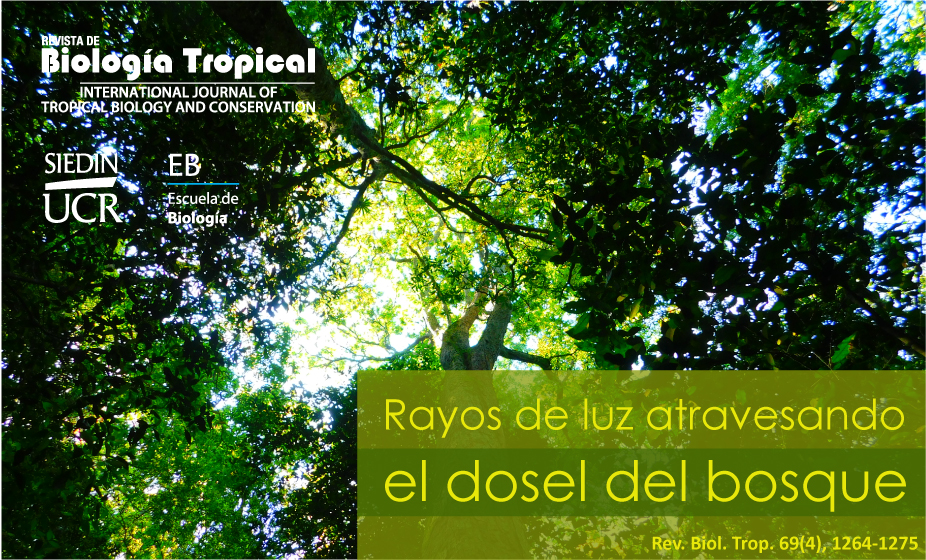Abstract
Tree structure and diversity at the protected natural area La Martinica, Veracruz, México. Introduction: The Humid Mountain Forest (HMF) has the largest number of plants per unit area, which vegetation grows in heterogeneous environmental conditions and has a high variation flora, physiognomy and structural. The conservation of the HMF is important due to the biodiversity it harbors and the environmental regulation services it provides. Objective: This work evaluated the effect of the direction of sun exposure (aspect) of the terrain and the density of the forest canopy (canopy opening type) on the structure and tree diversity in La Martinica Protected Natural Area, in Veracruz, Mexico. Methods: stratified sampling was performed in four aspects of the terrain and two canopy density conditions. In total, 25 20 x 25 m sampling units were considered (subdivided into 10 x 5 m units), in which the normal diameter (ND), total height and the largest and smallest diameters of the crown of the individuals with a ND ≥10 cm were registered. The diversity was estimated by means of rarefaction curves and the structure was analyzed through the importance value index and the forest value index. Results: We recorded 37 species belonging to 30 genera and 24 families, Zenithal and South aspects had the highest floristic similarity. Greater diversity was observed in the North aspect and in the Closed canopy. The tree species with the highest structural values were different between aspects and canopy types; Carpinus tropicalis presented the highest values in the Zenithal aspect, Lippia myriocephala in the East and South aspects, and Liquidambar styraciflua in the North. In both types of canopy Lippia myriocephala obtained the highest values in the Importance Value Index (IVI) and only Forest Value Index (FVI) in the Open canopy; Carpinus tropicalis reached a higher FVI in the Closed canopy. Conclusions: The tree structure was different in the four aspects studied, as well as in the two conditions of the canopy. The greatest difference in species composition and diversity was observed between the North and East aspects, of these, the North presented the highest richness values, equally frequent species and dominant species.
##plugins.facebook.comentarios##

This work is licensed under a Creative Commons Attribution 4.0 International License.
Copyright (c) 2021 Revista de Biología Tropical







